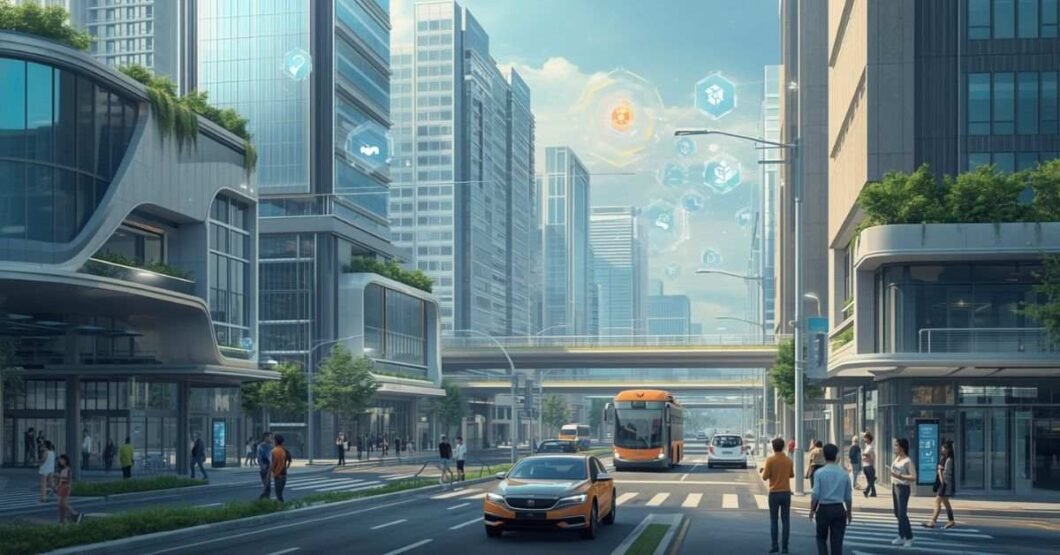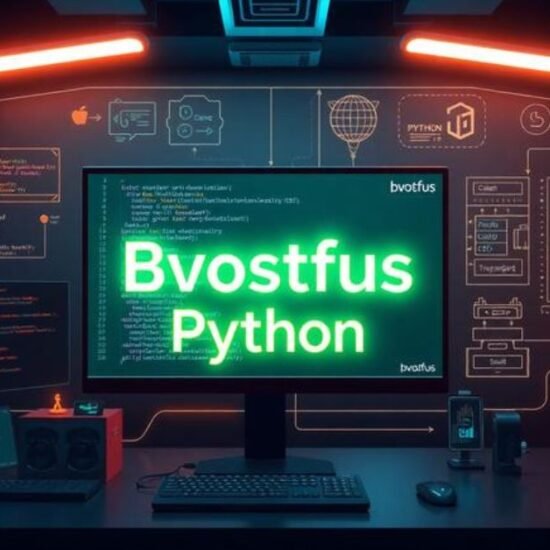Introduction
With overpopulation, congestion, pollution, and ineffective services in many cities of the world, the emergence of smart city technologies is a sign of hope. At the vanguard of this urban reinvention is a new concept: Simpcitt, a next-generation design that combines simplicity, sustainability, and smart technology to re-architect the way cities work and serve their populations.
Simpcitt, abbreviated to Simplified Smart City Technology, is a modular, AI-based urban platform that is driven by big data, the Internet of Things (IoT), and intelligent systems that prioritize real-time decision-making. But it is more than energy-saving bulbs or sensor-controlled traffic. It has to do with developing humanistic cities that are dynamic, fair, and convenient to manage.
This paper will discuss the fundamentals of the technologies of it, why it is not like the traditional smart city models, real-world examples, and what the future of this innovative idea holds. You are either a smart city planner, a government decision-maker, an urban tech developer, or an urban futurist: this guide not only demystifies SimCity but also demonstrates why it may form the cities of the future.
Understanding Simpcitt: The Core Concept of Simplified Smart Cities
Simpcitt is a combination of smart city technology and usefulness as well as sustainability. When compared to traditional models, which mostly rely on data infrastructure, Simpcitt stresses simple, modular systems that may be upscaled or downscaled.
Key Components:
- AI Core Engine: Resource planning predictive analytics.
- IoT Network: Environment, traffic, energy, and water synchronized environmental sensors.
- Modular Design: Easy to upgrade city blocks and microgrids.
- Citizen-Centric Services: Applications and interfaces that are accessible to the citizens and not only administrators.
- Sustainability First: All functions are geared towards green efficiency.
The Difference Between Simpcitt and Conventional Smart City Platforms
While digital transformation is the goal of many smart cities, Simpcitt places more emphasis on transformation that is intentional and driven by adaptability and simplicity.
Key Contrasts:
| Feature | Simpcitt | Traditional Smart Cities |
| Architecture | Modular & plug-and-play | Rigid, large-scale systems |
| Speed of Deployment | Fast (weeks) | Slow (months to years) |
| Citizen Engagement | Built-in feedback mechanisms | Often secondary or patchy |
| Cost Efficiency | High (due to modularization) | Low (high upfront investment) |
| Scalability | Micro-to-mega scalability | Limited once built |
| Data Ethics | Transparent, open control | Often unclear |
It enables cities to prioritize human needs while offering low-friction scalability.
Core Technologies Driving Simplicity in Smart Cities
IoT Integration
- Traffic flow optimization
- Waste management sensors
- Intelligent transportation systems.
Artificial Intelligence (AI)
- Predictive maintenance
- In the case of utilities, dynamic pricing.
- On-the-fly service modification.
Cloud and Edge Computing
- Faster processing at source
- Less reliance on central data centers.
Blockchain (Optional Layer)
- Secure public records
- Live micro-payments on utilities.
Digital Twin Technology
- Cities in real-time 3D.
- Emergency, traffic, and zoning scenario testing.
In the case of it, these technologies coordinate through a central Smart Operations Center, which is driven by citizen and machine feedback.
Case Study: Simpcitt in Action—The NeoCity Project
Overview:
- City: NeoCity, a Scandinavian mid-sized city of 350,000 people
- Problem: Poor traffic management, excessive pollution, and outdated infrastructure
- Solution: Putting Simpcitt’s modular tech stack into practice
Outcomes in 12 Months:
| Metric | Before Simpcitt | After Simpcitt |
| Avg. Traffic Congestion | 39% | 12% |
| Carbon Emissions (per year) | 22,500 tons | 17,100 tons |
| Municipal Cost (Energy) | $6.1M | $3.8M |
| Citizen Satisfaction | 64% | 88% |
Lessons Learned:
- Citizen mobile applications increased user happiness.
- Costs are reduced by microgrid modular power systems.
- Flexible transportation routes enhanced access to emergency services and traffic
This demonstrates the true, benchmark-friendly worth of it.
Urban Challenges Simpcitt Helps Solve—Today and in the Future
Traffic Congestion
- Live information on vehicles and signal control.
Waste Management
- IoT bins that report fullness only schedule pickups.
Pollution Control
- Air quality sensors, which send an alert and green zone lockout.
Energy Efficiency
- Peak-load shifting, user-controllable smart grids.
Resident Accessibility
- SMS/app (in case of elderly or differently-abled users) real-time update.
It operates proactively, addressing the issues from the planning to the execution, and even taking the time to listen to citizens in real time.
Citizen-Centric Design: How Simpcitt Enhances Public Life
And what makes Simpcitt so different? Its design and inclusion.
Features Built For People:
- Resident-specific city portal (alerts, reports, bills)
- Active mobility maps (pedestrian and cycling oriented)
- Civic design accessibility dashboard.
- Community feedback loop: within 5 mins react to problems.
- Citizen polling (new service planning) that is geo-targeted.
At Simpcitt, a smart city is co-created among its citizens rather than imposed on them. This lowers the resistance and raises the awareness and care.
Simpcitt-Powered Infrastructure: Scope and Scalability
Areas Where Simpcitt Works Seamlessly:
- Transport: Intelligent buses, advance notice.
- Power Grids: Microgrids are very efficient.
- Water Management: Leak detection + smart meters.
- Green Zones: Lighting up and down of the public parks.
- Medical Care: Electronic records + immediate reservations.
Scalable Models:
| City Size | Deployment Timeframe | Required Modules |
| Small Town (<100k) | 3–5 months | Basic/core modules |
| Medium City (100k–1M) | 6–10 months | Core + mobility + utilities |
| Mega City (>1M) | 12–18 months | Full smart modules |
It flexibility in terms of location and budget is what makes it so appealing.
Simpcitt vs. Other Smart City Platforms: A Comparative View
| Feature | Simpcitt | Cisco Kinetic | IBM Smarter Cities | Huawei Safe Cities |
| Modular Scalability | ✅ | ❌ Limited | ⭕ Moderate | ❌ |
| Citizen-Centric Focus | ✅ Strong | ⭕ | ❌ Enterprise-First | ❌ |
| Deployment Speed | ✅ Fast | ❌ Slow | ⭕ Medium | ❌ Heavy Infra |
| Maintenance Cost | ✅ Low | ❌ High | ❌ High | ❌ High |
| Open Standards | ✅ Yes | ❌ No | ⭕ Depends | ❌ Proprietary |
It safely and economically blends the strength of big-city IT with the agility of startups.
The Future of Simpcitt: Trends and Innovations to Watch
It is not frozen; it is not a city that does not change. Here’s what lies ahead:
Coming Innovations:
- Artificial intelligence enabled response centers to population emergencies.
- IoT rural smart grids are satellite-powered.
- IoT waste, power, and public transport micro-pay cards.
- City planning using analytics of ML behavior.
- Zero-lag data sharing infrastructure, 5G+6G.
The cities based on it are continuously self-optimizing ecosystems—living networks of services, adjusting to the lives of citizens.
How to Get Started with Simpcitt in Your Smart City Strategy
Considering moving to Simpcitt? Here’s how:
Step-by-Step Implementation:
- Needs Assessment: Begin with a pain point (e.g., traffic, waste, mobility).
- Pilot Program: Try out micro-solutions at the city level.
- Stakeholder Workshops: Include govt., citizens, and developers.
- Select Modules: Select Core + 1-2 custom layers.
- Pre-established KPIs: Sustainability, cost savings, public satisfaction.
- Launch + Iterate: Feedback + Upgrade + Evolve
Pro Tip: Sandbox environments can be used to test without imperiling existing infrastructure.
FAQs
Is it a product or a platform, Simpcitt?
Simpcitt is a customizable modular smart city technology platform, having plug-and-play capabilities.
What is unique about Simpcitt as compared to other smart solutions?
It is more about simplicity, scalability, and communication with people rather than complexity and cost.
Is it limited to the city governments?
No—it can also be used by real estate developers, SEZ zones, university towns, and even hospitals.
What is the security of the data structure of Simpcitt?
Simpcitt is encrypted with AES-256 and practices backups that are SOC2 compliant and that use role-based access control.
Will Simpcitt fit in a low budget or rural cities?
Absolutely. The modular model can be used by rural or small towns to use it as individual utilities.
Conclusion
Smart cities tend to be confused between complexity and innovation. Simpcitt alters this by providing a truly user-centric, flexible framework of civic technology. It makes the operations easier, minimizes the effect on the environment, and gives the residents power due to real-time interaction.
Through big projects of urban planners and small projects of eco-villages, it will give everyone an opportunity to create a better tomorrow, a smooth, predictable, connected one. It is not whether or not we should go smart anymore. But Simpcitt can make smart cities their home.




